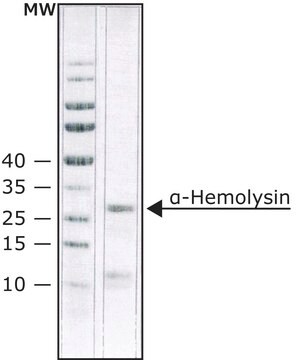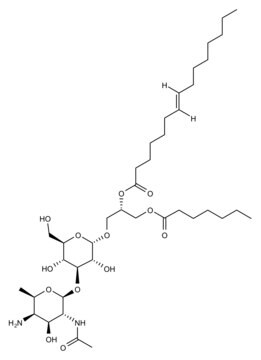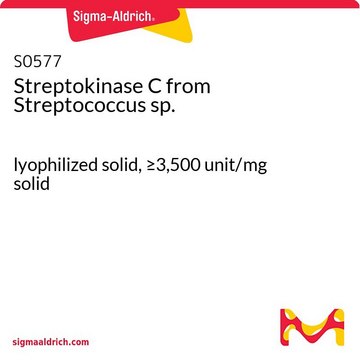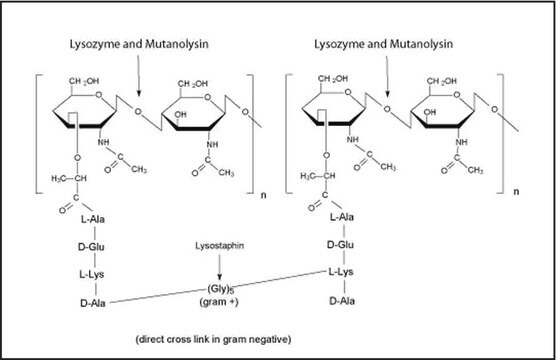SAE0089
Streptolysine O from Streptococcus pyogenes
≥1,000,000 units/mg protein, recombinant, lyophilized powder, expressed in E. coli
Synonyme(s) :
Streptolysin O from Streptococcus pyogenes, SLO
About This Item
Produits recommandés
Essai
≥95% (SDS-PAGE)
Activité spécifique
≥1,000,000 units/mg protein
Poids mol.
60 kDa
Numéro d'accès UniProt
Conditions d'expédition
ambient
Température de stockage
2-8°C
Vous recherchez des produits similaires ? Visite Guide de comparaison des produits
Description générale
SLO may be used for cell permeabilization or hemolysis. The susceptibility of hemolysis by SLO varies significantly for erythrocytes from different animal species.[1] Permeabilization of cells using SLO has been performed on multiple cell types and for various applications. For instance it has been used to introduce antisense oligonucleotides into cultured eukaryotic cells;[3] to investigate the effect of guanine nucleotide analogues on phosphatidylinositol metabolism and protein kinase C (PKC) activation in live human T lymphocytes;[4] to monitor cholesterol oxidation within a membrane lipid bilayer; [5] and to label proteins inside living cells using external fluorophores.[6]
Application
Actions biochimiques/physiologiques
Définition de l'unité
Mention d'avertissement
Danger
Mentions de danger
Conseils de prudence
Classification des risques
Acute Tox. 2 Dermal - Acute Tox. 2 Inhalation - Acute Tox. 2 Oral
Code de la classe de stockage
6.1A - Combustible acute toxic Cat. 1 and 2 / very toxic hazardous materials
Classe de danger pour l'eau (WGK)
WGK 3
Point d'éclair (°F)
Not applicable
Point d'éclair (°C)
Not applicable
Faites votre choix parmi les versions les plus récentes :
Certificats d'analyse (COA)
Vous ne trouvez pas la bonne version ?
Si vous avez besoin d'une version particulière, vous pouvez rechercher un certificat spécifique par le numéro de lot.
Déjà en possession de ce produit ?
Retrouvez la documentation relative aux produits que vous avez récemment achetés dans la Bibliothèque de documents.
Les clients ont également consulté
Global Trade Item Number
| Référence | GTIN |
|---|---|
| SAE0089-100KU | 4061835550920 |
Notre équipe de scientifiques dispose d'une expérience dans tous les secteurs de la recherche, notamment en sciences de la vie, science des matériaux, synthèse chimique, chromatographie, analyse et dans de nombreux autres domaines..
Contacter notre Service technique










